
ICU Bed vs Regular Hospital Bed: What to Choose for Medical Facilities
KEY TAKEAWAYS
- ICU beds feature advanced positioning options, integrated monitoring systems, and specialized therapy functions ($10,000-$30,000+)
- Regular hospital beds provide standard mobility, basic positioning, and essential safety features ($1,200-$5,000)
- Patient acuity level should determine bed choice - ICU beds for critical care, regular beds for routine medical care
- Staff requirements differ significantly - ICU beds require specialized training for advanced features
- Maintenance costs are substantially higher for ICU beds due to complex electronics and systems
- Space considerations - ICU beds generally have larger footprints with more attached equipment
- Best overall ICU bed option: Prius Electric Hospital Bed AI1 Premium for its exceptional balance of advanced features and value
The Prius Electric Hospital Bed AI1 Premium offers exceptional ICU-level care with:
- True ICU functionality: Advanced clinical positioning for critical care
- Integrated monitoring: Compatible with vital sign tracking systems
- Trendelenburg positioning: Precise angles for emergency interventions
- Bariatric capability: Supports patients up to 1000 lbs
- Advanced mobility: Ultra-low height range from 7" to 30"
For medical facilities making crucial decisions about equipment investments, understanding the differences between ICU beds and regular hospital beds is essential. While both serve patient care needs, they differ significantly in features, capabilities, and appropriate applications.
After thorough research and analysis, the Prius Electric Hospital Bed AI1 Premium emerges as the superior ICU bed option for medical facilities seeking to balance advanced critical care features with operational efficiency. This premium model delivers true ICU functionality while maintaining a more accessible price point than many competing intensive care beds.
In this comprehensive guide, we'll examine the key differences between ICU beds and regular hospital beds, helping medical facilities make informed decisions based on patient needs, staff requirements, and financial considerations.
Core Differences Between ICU Beds and Regular Hospital Beds
Healthcare facilities need to understand the fundamental distinctions between these bed types to properly equip different departments.
Design Purpose and Primary Functions
| Feature | ICU Beds | Regular Hospital Beds |
|---|---|---|
| Primary Purpose | Critical care and continuous monitoring | General patient comfort and basic care |
| Positioning Capability | Advanced multi-axis positioning with presets | Basic head, foot and height adjustment |
| Monitoring Integration | Built-in vital sign monitoring capabilities | Limited or no integrated monitoring |
| Emergency Functions | CPR mode, quick position changes, backup power | Basic emergency positions |
| Patient Weight Capacity | 500-1000+ lbs | 350-600 lbs |
| Typical Price Range | $10,000-$30,000+ | $1,200-$5,000 |
ICU beds are designed for critically ill patients requiring:
- Continuous monitoring and intensive intervention
- Rapid position changes for emergency procedures
- Multiple clinical positions for organ support
- Integration with life-support equipment
- Immediate access for medical procedures
The Prius Electric Hospital Bed AI1 Premium exemplifies these advanced ICU capabilities at $9,750, offering premium features at a more accessible price point than many competitor ICU beds.
Regular hospital beds are designed for:
- Stable patients requiring routine care
- Basic positioning for comfort and treatment
- Moderate medical intervention
- Typical hospital stays
- Lower acuity environments
The Costcare Full Electric Hospital Bed B135C represents a quality standard hospital bed at $1,298.
Advanced Positioning and Clinical Functions
The sophistication of positioning options represents a major difference between these bed types.
ICU beds offer advanced positioning including:
- True Trendelenburg/Reverse Trendelenburg: Precise angles for critical interventions
- Lateral rotation therapy: Automated turning to prevent pulmonary complications
- Proning capability: Specialized positioning for ARDS and respiratory distress
- Chair position: Cardiac support configuration
- One-touch CPR mode: Instant flat positioning for resuscitation
- Programmable therapy positions: Save specialized treatment configurations
While not a full ICU bed, the Costcare Trendelenburg Adjustable Hospital Bed B730 offers some advanced positioning at $4,300, making it a potential bridge option for facilities with moderate acuity needs.
Regular hospital beds typically provide:
- Basic head/foot elevation
- Standard height adjustment
- Limited Trendelenburg capability
- Manual or basic electric adjustments
- Fewer position presets
- Simpler control systems
Monitoring and Integration Capabilities
Modern ICU beds incorporate sophisticated technology for patient monitoring and care.
ICU beds feature sophisticated monitoring systems:
- Integrated vital sign sensors: Continuous monitoring without separate devices
- Weight monitoring: Built-in scales for precise fluid management
- Pressure mapping: Monitors pressure distribution for ulcer prevention
- Movement tracking: Patient position and activity sensors
- Data integration: Connects to hospital electronic medical records
- Alarm systems: Alert for patient condition changes
The Medacure Bariatric Adjustable Bed Lincoln LX-BARI-S features integrated scale functionality at $3,495, offering one advanced monitoring feature found in many ICU beds.
Regular hospital beds typically lack:
- Integrated monitoring systems
- Built-in scales
- Advanced sensor technology
- Data integration capabilities
- Sophisticated alarm systems
- Electronic charting connection
Safety Features and Emergency Functions
ICU scenarios demand immediate response capabilities not typically needed in regular hospital settings.

ICU beds include critical safety systems:
- One-touch CPR mode: Immediate flat positioning for resuscitation
- Backup power systems: Battery operation during power failure
- Advanced side rail design: Quick-release for emergency access
- Integrated scale functionality: Monitors fluid status changes
- Bed exit detection: Alerts for unauthorized movement
- X-ray cassette compatibility: In-bed imaging without transfer
The Trendelenburg Costcare Adjustable Medical Bed B337 offers some emergency positioning capabilities at $1,675, though it lacks the full emergency function suite of true ICU beds.
Regular hospital beds typically provide:
- Basic side rails
- Simple lockout controls
- Manual CPR release
- Standard wheel locks
- Limited or no backup power
- Basic alarm systems
Practical Considerations for Medical Facilities
Beyond technical specifications, operational factors significantly impact the bed selection decision for different healthcare settings.
Patient Acuity and Department Requirements
Different hospital departments have varying patient needs that determine appropriate bed selection.
| Department/Setting | Recommended Bed Type | Key Features Needed |
|---|---|---|
| Intensive Care (ICU) | ICU Bed | Full monitoring, advanced positioning, emergency functions |
| Step-Down/Progressive Care | Advanced Hospital Bed or Basic ICU Bed | Some specialized functions, monitoring capability |
| Medical/Surgical | Regular Hospital Bed | Basic positioning, standard safety features |
| Long-Term Acute Care | Specialized Hospital Bed | Pressure relief, positioning options, durability |
| Emergency Department | Specialized Emergency/Trauma Bed | Quick positioning, imaging compatibility, accessibility |
| Labor & Delivery | Specialized OB Bed | Unique positioning, quick conversion, specialized functions |
Staffing and Training Requirements
The sophistication of bed technology directly impacts staffing needs and training requirements.
ICU beds require extensive staff training on:
- Complex control system operation
- Advanced positioning protocols
- Monitoring system interpretation
- Emergency function procedures
- Troubleshooting technical issues
- Integrated technology management
Regular hospital beds necessitate only:
- Basic position adjustment training
- Standard safety protocol review
- Simple maintenance checks
- Routine cleaning procedures
- Basic troubleshooting skills
- Standard operating procedures
Total Cost of Ownership Analysis
The financial implications of bed selection extend far beyond initial purchase price.
| Cost Factor | ICU Beds | Regular Hospital Beds |
|---|---|---|
| Initial Purchase | $10,000-$30,000+ | $1,200-$5,000 |
| Annual Maintenance | $1,500-$3,000 | $200-$600 |
| Lifespan | 7-10 years | 10-15 years |
| Staff Training | $1,000-$2,500 per bed | $200-$500 per bed |
| Power Consumption | Higher (multiple motors/systems) | Lower (fewer electronic components) |
| Repair Complexity | Highly technical, specialized parts | Simpler repairs, standard components |
Additional cost factors for ICU beds include:
- Specialized mattress systems ($2,000-$8,000)
- Software licensing and updates
- Advanced accessory compatibility
- Backup power systems
- Network integration requirements
- Specialized cleaning protocols
Space and Facility Integration
Bed selection affects physical space requirements and facility infrastructure needs.
ICU beds typically require:
- Larger footprint (typically 15-20% more space)
- Additional electrical outlets (6-8 per bed)
- Network connectivity
- Medical gas access points
- Monitoring system infrastructure
- Backup power connections
Regular hospital beds generally need:
- Standard room dimensions
- Basic electrical service (2-4 outlets)
- Standard floor load capacity
- Traditional headwall configuration
- Minimal technical infrastructure
- Standard doorway clearance
Specialized Needs and Applications
Different clinical scenarios may require specific bed features beyond standard options.
Bariatric Patient Care
Caring for higher weight patients presents unique challenges that specialized beds must address.

Bariatric ICU beds provide:
- Weight capacities of 800-1000+ pounds
- Reinforced frame construction
- Wider support surfaces (48"-60")
- Powerful motors for positioning
- Specialized pressure distribution
- Enhanced stability systems
The Prius Electric Hospital Bed AI1 Premium offers bariatric capability with ICU features.
For regular bariatric hospital beds, the Full Electric Bariatric Hospital Bed Costcare B142C provides basic bariatric support at $1,842.
Imaging and Procedure Compatibility
Modern clinical care often requires imaging and procedures without patient transfer.
Advanced ICU beds facilitate:
- Radiolucent bed platform sections
- Built-in X-ray cassette holders
- C-arm compatibility for fluoroscopy
- Removable head/foot boards for access
- Quick-disconnect side rails
- Position memory for repeated imaging
Regular hospital beds typically have limited imaging compatibility:
- Basic radiolucent sections
- Manual component removal for access
- Limited specialized imaging support
- Fewer access configurations
- Standard components that may obstruct imaging
Pressure Management and Wound Care
Preventing and treating pressure injuries is a critical concern, especially for immobile patients.
ICU beds often feature integrated systems for:
- Continuous pressure mapping
- Automatic weight redistribution
- Integrated low air loss surfaces
- Alternating pressure therapy
- Microclimate management
- Turn assist for repositioning
While most beds require separate specialized mattresses, the Medacure Pro Dynamic True Low Air Loss Hospital Bed Mattress provides advanced pressure management capabilities compatible with both ICU and regular hospital beds.
Our Recommendation: The Prius Electric Hospital Bed AI1 Premium
After evaluating the full spectrum of options across multiple criteria, the Prius Electric Hospital Bed AI1 Premium emerges as our top recommendation for facilities seeking ICU-level capabilities.

The Prius AI1 Premium stands above competing options with:
- True ICU functionality: Advanced clinical positioning for critical care
- Value proposition: Premium features at $9,750 (vs. $20,000+ for many competitors)
- Bariatric capability: Supports patients up to 1000 lbs
- Advanced mobility: Ultra-low height range from 7" to 30"
- Trendelenburg positioning: Precise angles for emergency interventions
- Monitoring compatibility: Works with major patient monitoring systems
For facilities with more basic ICU needs, the Costcare Trendelenburg Adjustable Hospital Bed B730 at $4,300 offers some advanced positioning capabilities at a significantly lower price point.
For standard medical-surgical units, the Costcare Full Electric Hospital Bed B135C at $1,298 provides reliable functionality for routine patient care.
Frequently Asked Questions
When is it appropriate to use an ICU bed versus a regular hospital bed?
ICU beds should be used when patients require: continuous vital sign monitoring, frequent and precise position changes, advanced respiratory support, critical cardiac monitoring, extensive wound care, or regular emergency interventions. Regular hospital beds are appropriate for stable patients requiring routine care, basic position adjustments, moderate monitoring, and standard nursing interventions. The determining factors should include patient acuity level, monitoring needs, positioning requirements, likelihood of emergency interventions, and staff specialization. For intermediate situations, step-down units often utilize enhanced regular beds with select advanced features rather than full ICU models.
What are the main cost differences beyond the initial purchase price?
Beyond the substantial initial price difference ($10,000-$30,000+ for ICU beds versus $1,200-$5,000 for regular beds), key cost differences include: maintenance contracts (3-5x higher for ICU beds), specialized mattress systems ($2,000-$8,000 for ICU beds), staff training requirements ($1,000-$2,500 per ICU bed), repair costs (specialized components for ICU beds), power consumption (higher for multiple ICU systems), software/firmware updates (ongoing expense for ICU beds), and lifespan differences (typically 7-10 years for ICU beds versus 10-15 years for regular beds). When calculating total cost of ownership, facilities must consider all these factors across the expected service life.
How do staffing requirements differ between ICU and regular hospital beds?
ICU beds require significantly more specialized staffing considerations including: advanced training on complex control systems, technical proficiency with integrated monitoring, understanding of therapeutic positioning protocols, ability to interpret specialized alarms and data, knowledge of emergency function operation, and skills for basic troubleshooting. Regular hospital beds require only basic operational training. These differences impact staffing costs, orientation time for new employees, ongoing education requirements, and technical support needs. Facilities must factor these staffing implications into overall resource planning when selecting bed types for different departments.
Can regular hospital beds be upgraded to provide some ICU capabilities?
While regular hospital beds cannot be fully converted to ICU beds, they can be enhanced with select capabilities through: specialized mattress overlays (adding pressure management), separate monitoring systems (providing vital sign tracking), additional side rail options (improving safety), aftermarket positioning wedges (creating more positioning options), and supplementary power backup systems. However, these add-ons never achieve true integration, lack emergency functionality, don't provide specialized positioning precision, and ultimately cost more than purpose-built solutions. Facilities with intermediate needs are often better served by mid-tier specialty beds designed for specific enhanced functions rather than attempting to upgrade basic beds.
What infrastructure changes are needed when switching between bed types?
Converting spaces between ICU and regular bed usage requires significant infrastructure modifications including: electrical system upgrades (ICU beds require more outlets and higher amperage), network connectivity installation (for integrated monitoring systems), headwall reconfiguration (for additional medical gas and suction access), room size adjustments (ICU beds need 15-20% more space), doorway widening (for larger ICU bed frames), and monitoring system installation. These changes represent substantial capital investments beyond the beds themselves. Facilities planning flexible spaces should consider designing to ICU specifications initially, even if initially equipped with regular beds, to simplify future conversions.
How do the mattress requirements differ between ICU and regular hospital beds?
ICU beds typically require specialized therapeutic mattresses that are: significantly more expensive ($2,000-$8,000 vs. $300-$1,000 for regular mattresses), technically complex with powered components, specifically designed for critical care conditions, capable of integrated pressure monitoring, compatible with advanced bed positioning, and able to support specialized therapy modes like lateral rotation. Regular hospital beds generally use standard medical mattresses with basic pressure distribution. While some specialized mattresses can work with both bed types, they often lose functionality when not paired with their intended bed system, particularly features requiring electronic integration or specialized frame movement.
What are the key maintenance differences between ICU and regular hospital beds?
Maintenance requirements differ substantially with ICU beds requiring: more frequent preventive maintenance (quarterly vs. annual for regular beds), specialized technical expertise for service, more extensive parts inventories, software/firmware updates, calibration of integrated sensors and scales, and significantly higher service contract costs. Regular hospital beds need only basic mechanical and electrical maintenance. These differences impact both direct maintenance expenses and operational considerations like downtime management, in-house technical capabilities, and vendor relationships. Facilities should factor maintenance complexity into their total cost of ownership calculations when making bed selection decisions.





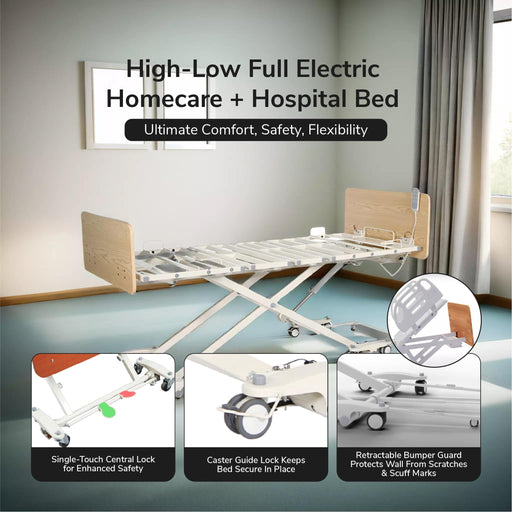

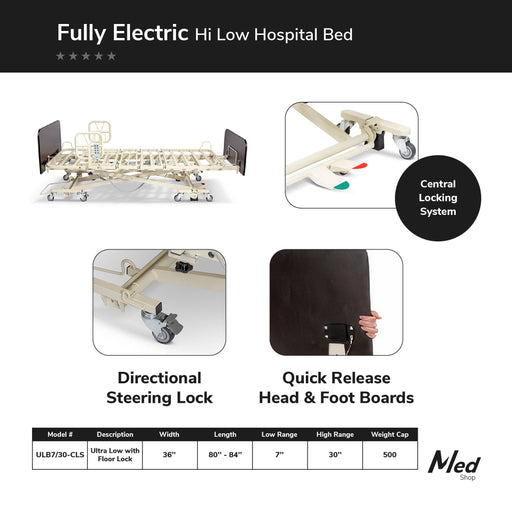
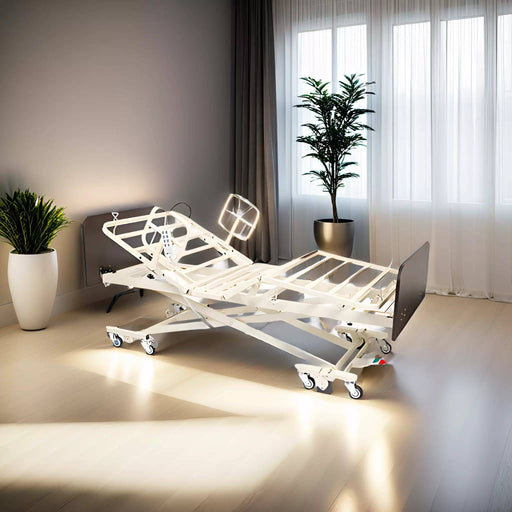


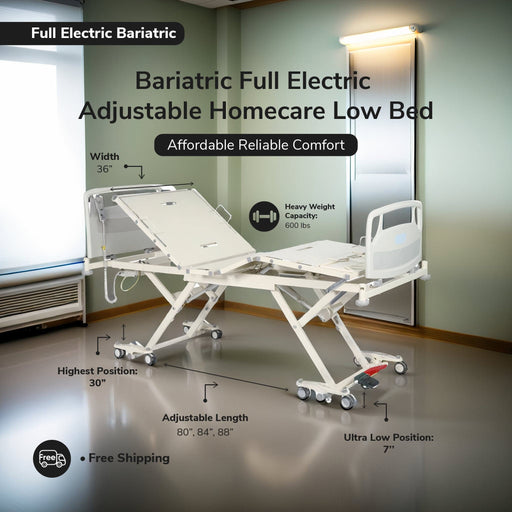
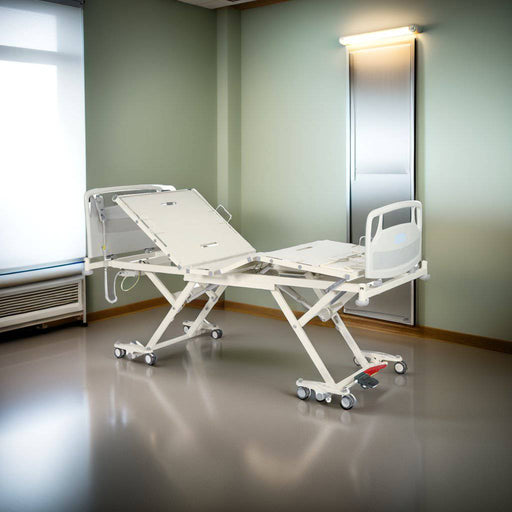
Leave a comment